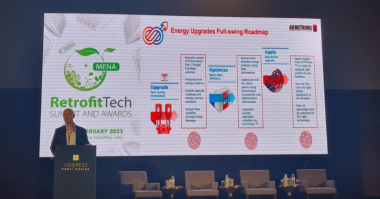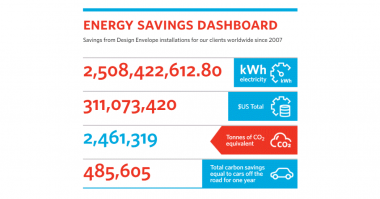As facility managers, contractors and service professionals gain experience working with remote performance tracking capabilities for intelligent pumps, the hvac industry is learning how valuable this type of subscription service can be. It seems that many customers originally agreed to the purchase of a performance tracking subscription service on the assumption that it would serve only as a security blanket, but would be mostly unnecessary. Based on the testimonial stories provided by customers describing service, maintenance and performance management scenarios, the subscription service has proven its value many times over. Examples detailing how remote performance tracking prevented a serious negative outcome, organized into categories, are presented below.
Where the current market offering for performance tracking services includes a range of different options, the leading
subscription services provide data storage, local performance read-outs as well as performance reports and trends, securely available from any connected device. Data points and trends available include flow and head, vibration, flow profile, energy consumption and carbon footprint. Performance alerts can be delivered to report instances of excessive vibration, broken coupling, pump in hand, deadhead, cavitation.
Dead-Head
A key success of Pump Manager is illustrated with an example from a project in Bahrain. Armstrong was alerted of a dead-heading situation. The customer was relying on the data displayed on a bms interface for the system health. The operator doubted that the Design Envelope pumps were not running, since the bms system showed the valve was open and cooling requirements for the zone were being met. A technician from Armstrong explains: We told them we could view the pump performance remotely, that the pumps were running close to shut-off heads and that there was a small power draw even at zero flow in the system. The customer agreed to conduct a physical examination and was shocked to learn that valve was actually closed and there was no flow.
Left unaddressed, the dead-head status of the pumps could have led to seal failure, motor failure and, in the extreme case, fluid leaks. As a result of the remote tracking capabilities of Pump Manager, and the attentiveness of an Armstrong technician, these results were all avoided. The maintenance issue was addressed, and the site returned to efficient HVAC operation.
![]()
Design Versus Actual Demand
Another site-related issue that can be addressed with Pump Manager is the disparity between design conditions and actual requirements. Consulting engineers normally include safety factors when designing for a project, partly to allow for future system demand, partly to make up for any missed aspects of design or demand, and partly to account for any shortfall in equipment performance. While this practice is embedded in the industry, it means that actual requirements for head and flow may be much lower than specified.
For Constant Speed pumps, this can result in over-pumping in head and flow, beyond what is required, needlessly consuming more power than necessary. For Variable Speed pumps that do not have demand-based control, while the speed of the vsd can be permanently lowered to a fixed value, not being able to adjust shaft rpm in real time to match changing demand can result in large amounts of energy waste.
This type of scenario can be avoided with Pump Manager, as the motor power output can be analyzed in detail, relative to typical flow and head levels. With sufficient data, operators can reduce the maximum shaft rpm to recommended levels, and still meet dynamic system flow and head demands. A recent example from a project in Dubai illustrates this perfectly. Armstrong recommended that the customer reduce the operating limits for the pump motor from 2900 rpm to just 2600 rpm. This allowed the pump motor to operate in a more appropriate range. More importantly, system demand for flow and head was 100% satisfied, and the pump energy use was reduced by 20%.
Mode Change Alerts
In certain regions of the world, the built environment, and the requirement for experienced operators, can outpace the availability of qualified individuals. Most sites and plant rooms are maintained by third-party facility management companies or service contractors. Employee turnover in these companies is frequently quite high, so the individuals supplied often lack the experience required to properly manage sophisticated hvac systems. Maintaining and operating equipment so that hvac systems function at best efficiency levels is often challenging due to the propensity of operators to manually override manufacturer and bms settings.
In a recent incident, a set of Armstrong Design Envelope Pumps were set to run in Auto Mode at a customer site in Al Jaddaf, Dubai. The pumps were manually over-ridden by a night technician who noticed the pumps were not operating and wanted to ensure they had not failed. On the notion that system flow should be managed by restricting mechanical valves, the technician changed both pumps to operate at full speed and left them set to In-Hand mode. In reality, just one of the two pumps could have met the relatively low overnight demand for chilled water and would have been operating at levels close to the best efficiency point. An Armstrong technician was notified of the mode change by sms and e-mail. In turn, the customer was advised of the situation, and the pumps were returned to the proper settings.
![]()
Remote Performance Tracking
Dubai is home to many high-end residences in large complexes. Observing and tracking hvac performance by walking to each installation in a campus is impractical. In a recent success story, the remote performance tracking capabilities of Pump Manager allowed site management staff to identify and resolve issues in multiple locations.
In the last year, there were about 5-6 service issues that came up and it’s noteworthy that all of those were addressed remotely with the help of Pump Manager.
In one instance, a valve closure left pumps in dead-head state. Pump Manager provided alerts to identify the problem. Later on, a 2-way valve that served a fan coil unit (fcu) experienced issues, resulting in a zig-zag pattern in the hvac mapping. The auto-balancing feature of Design Envelope cloud-connected pump helped address the issue, but the capabilities for remote performance analysis embedded in Pump Manager made the diagnosis possible.
These are just a few examples of the many instances around the world in which intelligent, cloud-connected systems create an environment that supports active management of performance in mechanical systems. In return for careful evaluation and comparison of components and system designs, engineers, contractors and owners can have access to this type of advanced subscription service and the benefits thereof.




Comments